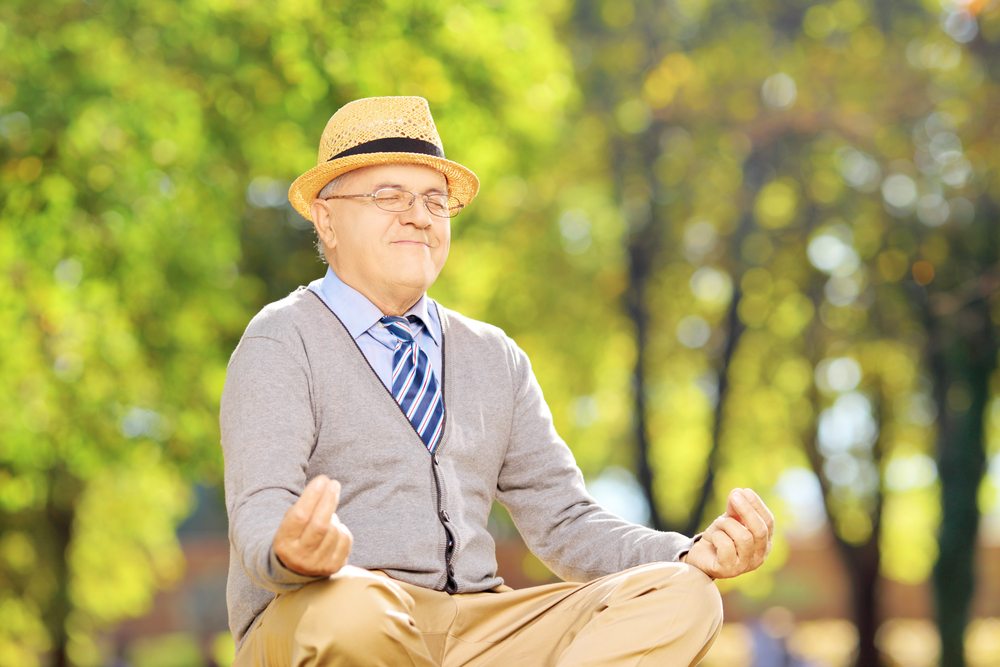From the shallowest to the deepest form of stress and worry, seniors may encounter ruminations through their late stage of life. This can be overwhelming for them and for their loved ones and caregivers. Fortunately, meditation is the antidote that can alleviate this. This ancient practice of mind-body connection is not just limited to non-secular practices, but has gained popularity through neuroscience and modern applications. For seniors, meditation is just about the way to graceful aging as it reduces feelings of despair and the chronic illnesses that can come along with it.
There is no one type of meditation. In fact, in the Buddhist tradition, it is just like sports, where there are hundreds of variations of it. We’ve narrowed down the most effective types of meditation for seniors:

Mindfulness Meditation
Erik Erikson has stated in his developmental stages theory that individuals start to reflect on their lives during their retirement years. Depending on whether they find their lives fulfilling or regretful, they could either develop despair or integrity, wisdom, or hopelessness. The point is—ruminations, more than any phase of one’s life is much more inevitable among seniors. This is where mindfulness becomes a vital mediator.
Here’s a little bit of neuroscience behind it: the DMN (default mode network) of the brain activates during mind-wandering. At the same time, the dorsolateral prefrontal cortex plays a role in attention. When you focus your attention on something (on breathing, for example), this part of the brain activates. Mindfulness meditation stimulates this mental muscle and decreases DMN activity. In Layman’s terms, it controls our wanderings and takes our focus back in the present.
Rather than drifting to the past and fearing the future, this meditation encourages seniors to be fully aware of the present and their existing surroundings. As a result, studies show that it reduces depression, anxiety, and stress. It also improves focus, memory, resilience, and lessens impulsive reactions.
Spiritual Meditation
Within our younger years, we have a long list of priorities, and the concept of spirituality often falls to last or none at all. But during retirement years, seniors may experience a shift of perspectives and priorities, therefore they invest more time in seeking spiritual growth and developing faith. In the US alone, about 90% of older adults consider themselves religious or spiritual.
Spiritual meditation may just be the right practice for some. Within the religious context, it is used in traditions such as Hinduism, Daoism, and Christian faith. This practice can be done in a place of worship, within their assisted living community or in nature. Spoken or silent prayer is included, whose sole purpose is to strengthen the connection with the Divine or the universe. Whether secular or non-secular, spiritual meditation develops values of loving-kindness, compassion, self-reflection, and spiritual growth.
Focused Meditation
From the word itself, this kind of meditation does not require many bodily movements and activates concentration. This is great for seniors who prefer to sit in a quiet place or for those whose mobility is limited. Within the practice, they can put their focus on a particular thing like breathing, noticing the movement of the rib cage along with it, and feeling their bodily sensations. Nature is also a good place of practice. Here, they could focus on the rustle of the leaves, the subtle blows of the wind, and the chirping of the birds.
Another traditional practice involves coffee or tea drinking, by which practitioners completely ignore their existing surroundings and pay full attention to either the aroma or warmth of their beverage.
In essence, this could help seniors retain attention and prevent their minds from wandering to the things that will snatch away their peace. By increasing brain connectivity, this meditation could also counter the loss of concentration as early signs of Alzheimer’s.
Movement Meditation
As opposed to the previous type of meditation, this practice is perfect for older adults who do not prefer to stay still in the same position for a couple of minutes while meditating. In choosing a meditation technique, it reflects the personality a person has. If a senior is physically active on his youthful days, this kind of meditation will most likely suit him/her. Although this can be done even without exerting too much force. An elderly person can lie on a mat and can do simple yoga movements while meditating on things that will make them at peace.
This practice can increase a senior’s awareness of their bodily movements. Over time, they can incorporate this in just about any form of physical activity: walking, dancing, jogging, gardening, or even washing the dishes. The goal is to find concentration in motion.

Visualization Meditation
Visualizing while meditating is another technique that will help seniors with creative minds to feel at ease and peace. This kind of meditation is suitable for elder adults who love to imagine creative things, remember special events in their lives, and to say positive things repeatedly until the body conforms with it. In doing this, they may start by picking an area in their life to focus on. After that, they could repeatedly utter “Breathe in. Breathe out. Smile.” While saying this, the body should follow.
Seniors might look back on their past decisions in life, and negative thoughts may come, but they should let it pass through. This helps them overcome whatever emotions they have bottled inside for a long time, may it be regrets or similar feelings. Positive thoughts come next, and this time, it will help them realize that whatever decision they have made in their youthful days, it shaped them for the better.
Key Takeaway
Meditation is not about fixing anything. It’s about changing the perceptions of its practitioners. By changing the way they think, seniors can improve their reaction to circumstances and can change the way they relate to the world. When incorporated in senior living, meditation paves the way for many health benefits, aiding them with brighter golden years.

